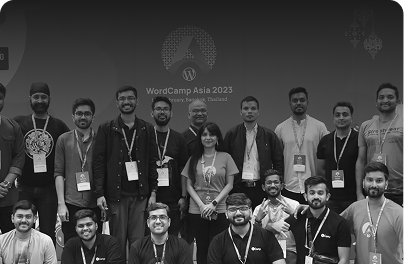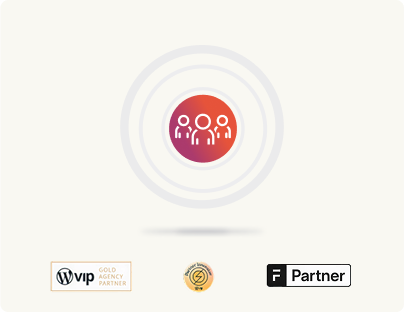Strapi vs headless WordPress: As a multisite solution
Multisite functionality is a crucial feature for organizations managing multiple digital properties. It is especially valuable for enterprises with diverse brands, regional websites, or large-scale content operations, where consistency and scalability are essential. Centralized control, coupled with flexibility for individual properties, is often a critical factor when selecting a CMS in such use cases.
When comparing Strapi vs WordPress as a CMS for multisite readiness, particularly in terms of how easily each platform handles multiple sites, the differences are stark.
But to truly understand how WordPress differs from Strapi in terms of multisite functionality, it’s important to first see how WordPress extends its traditional multisite features to suit its more modern headless implementations. So we’ll do just that and then see how each platform (Strapi and headless WordPress) brings a unique perspective to multisite management, shaped by its architectural philosophy and intended use cases. Let’s break down how each works across key considerations.
1. Setting up a multisite network
- WordPress (in a traditional setup):
Enabling multisite in WordPress involves modifying the wp-config.php file, configuring domains or directories, and using the built-in admin dashboard to manage the network. This setup is straightforward and centralized. - WordPress (in a headless setup):
The process to enable multisite is the same, but in a headless setup, additional work is needed to integrate the WordPress REST API or GraphQL with a custom frontend. Each site’s content must be fetched and rendered by the frontend framework, requiring development effort to replicate the multisite architecture. - Strapi
Strapi doesn’t offer a native “multisite” feature. Instead, managing multiple sites typically involves creating separate Strapi instances or structuring a single instance to serve multiple sites through different content types, locales, or APIs. Setting up Strapi for multisite management requires a developer-driven approach and customization, such as routing and permission configurations.
2. Managing a multisite network
- WordPress (in a traditional setup):
Administrators use a single dashboard to manage user roles, themes, plugins, and settings for all sites in the network. Changes can be rolled out across all sites or configured individually. - WordPress (in a headless setup):
The admin dashboard still handles user roles, plugins, and content settings, but the decoupled frontend needs additional configuration to ensure each site is appropriately represented. - Strapi:
There’s no centralized dashboard for managing multiple sites. Developers typically create APIs that allow a single Strapi instance to serve content for multiple sites or maintain separate Strapi instances for each site. Content and configuration changes require custom workflows, which can add complexity for non-technical administrators.
3. Managing the frontend in a multisite network
- WordPress (in a traditional setup):
Themes and templates allow significant customization for each site in the network. frontend modifications are handled within WordPress’s native theming system. - WordPress (in a headless setup):
A decoupled frontend provides maximum flexibility. Developers can use frameworks like React or Next.js to create highly customized experiences, but they must explicitly configure routing and data fetching for each site. - Strapi:
Strapi is inherently headless, which means developers have full control over the frontend presentation. This flexibility is useful for highly customized experiences, but it requires additional development effort to manage multisite-specific frontend behaviors like routing, data fetching, and content separation.
4. Handling scalability in a multisite network
- WordPress (in a traditional setup):
The multisite network is designed to scale efficiently within WordPress’s ecosystem, making it easier to manage large networks of sites. - WordPress (in a headless setup):
Scalability depends on both the WordPress backend and the decoupled frontend application. Hosting and resource allocation for both must be managed to ensure smooth operation. - Strapi:
Scaling Strapi for multiple sites often involves horizontal scaling with separate Strapi instances or building robust APIs for content delivery. This approach can work for large networks but requires technical expertise and proper infrastructure planning.
5. Use cases
- (Traditional) WordPress:
Best suited for organizations that need an out-of-the-box multisite solution with minimal setup and centralized management. - (Headless) WordPress:
Ideal for enterprises requiring a modern, decoupled frontend with the flexibility to create unique user experiences for each site while leveraging WordPress’s multisite capabilities. - Strapi:
A good fit for organizations that prioritize API-first content management and need a high degree of customization. Strapi’s multisite approach is highly flexible but better suited for developer-heavy teams that can handle custom configurations.
Strapi vs WordPress as a CMS (in a headless multisite context)
WordPress Multisite excels in offering a centralized, user-friendly solution for managing multiple sites, whether traditional or headless. Strapi, on the other hand, provides unparalleled flexibility through its headless-first approach, but the lack of native multisite features means higher reliance on custom development. The choice depends on your organization’s technical expertise and the complexity of your multisite needs. In general, if you need a ready-to-deploy and more straightforward solution with a centralized backend that integrates well with your content creation, management, and delivery workflows, WordPress Multisite is likely the better option.







